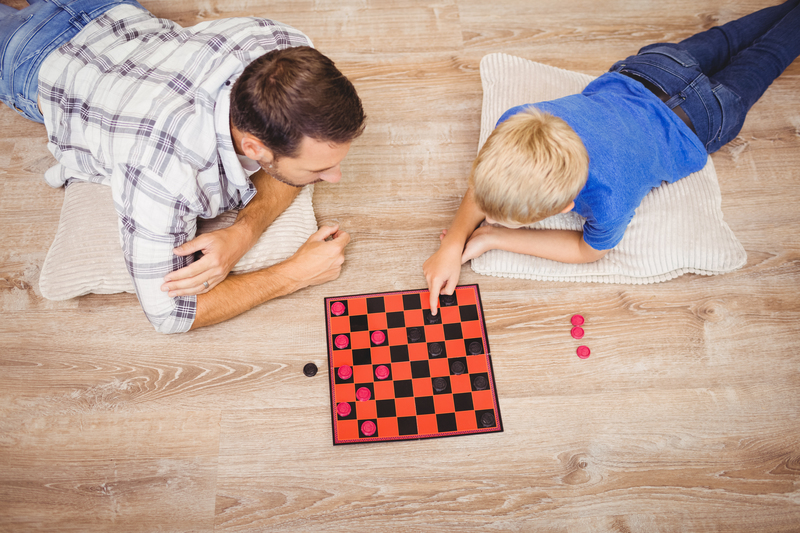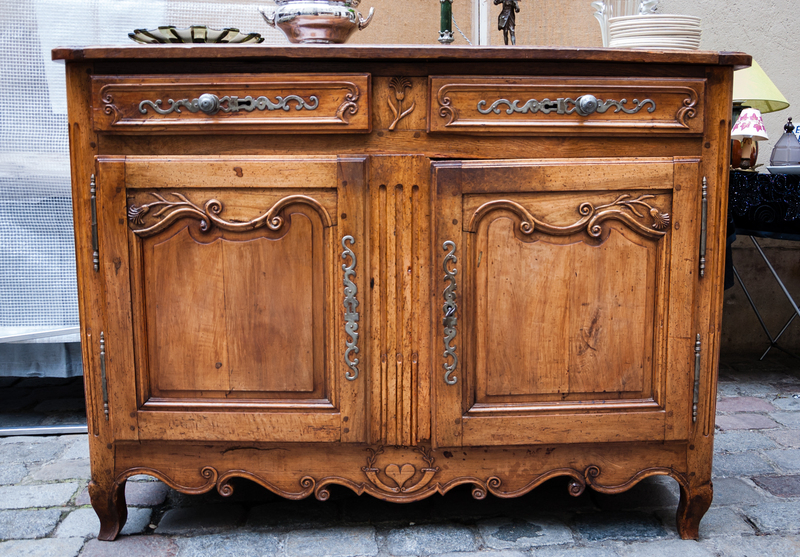Sustainable Options for Plant Pot Disposal
As the global community continues to embrace sustainability in every aspect of daily life, the garden and horticulture industry is also undergoing a green revolution. A common dilemma facing gardeners and plant enthusiasts is what to do with empty or broken plant pots. Most plant containers, especially plastic ones, can pile up after each gardening season, leading to significant environmental challenges. Fortunately, a variety of sustainable plant pot disposal methods exist, allowing gardeners to reduce waste and support ecology while cultivating beautiful gardens.

Why Proper Plant Pot Disposal Matters
Proper disposal of plant pots is more than just about keeping your garage tidy. Millions of plastic pots are discarded every year, adding to landfill waste and contributing to plastic pollution. Many of these pots are made from plastics that aren't easily recyclable and can take hundreds of years to decompose. Even terra cotta, ceramic, and biodegradable plant containers should be handled responsibly to support a sustainable environment. By adopting eco-friendly ways to dispose of plant pots, you support a healthier planet and set a great example for fellow garden lovers.
Common Problems with Plant Pot Disposal
- Non-recyclable Materials: Many plastic pots are made from types of plastic (like #5 polypropylene) which aren't always accepted by curbside recycling programs.
- Waste in Landfills: Most plant containers end up in landfills where they may leach chemicals or simply clutter the environment for centuries.
- Resource Waste: Disposing of pots rather than reusing or recycling wastes the energy and materials that went into manufacturing them.
Alternative Disposal Methods for Plant Pots
Thankfully, gardeners have sustainable options for disposing of plant pots in ways that reduce environmental impact. Consider the following alternatives:
1. Reuse Plant Pots for Gardening and DIY Projects
Reusing plant pots is one of the most effective and direct ways to keep them out of landfills. Old containers can be cleaned and reused for new plants. You can also repurpose them creatively:
- Seed starting trays: Small pots are perfect for germinating new seeds.
- Organizing Tools: Use them to hold garden tags, twine, or craft supplies.
- Decorative Planters: Paint or decorate old pots for a new look.
- Educational projects: Donate used pots to schools or community centers for eco-projects or science classes.
- Yard art: Stack and assemble old pots artistically for unique garden sculptures.
This approach encourages a circular use of materials, reducing the need for purchasing new pots and ensuring existing ones stay in use for as long as possible.
2. Recycle Plant Pots Through Special Programs
Although most curbside recycling programs do not accept plastic plant pots, many regions now offer plant pot recycling programs. Here's how to participate:
- Check with your local garden centers and nurseries. Big retailers such as Lowe's and Home Depot often run recycling initiatives where gardeners can drop off unwanted pots.
- Research local waste management programs or municipal collection facilities for drop-off locations that accept #5 and #2 plastics.
- If you have ceramic or terracotta pots, search for local recyclers who handle ceramics or construction debris.
Always remove excess soil and rinse pots before recycling. Dirty or contaminated pots can spoil batches of recyclable materials, reducing recycling efficiency.
3. Donate or Share Plant Pots with Others
If you have surplus containers in good condition, consider giving them away. There's always someone looking for extra pots, especially in urban gardening communities or schools. Here are some ideas:
- Community gardens: Most communal garden plots welcome donations of usable pots.
- Schools and nonprofits: Many organizations run plant sales, educational gardens, or gardening programs needing materials.
- Neighbor exchanges: Online groups like Facebook Marketplace, Freecycle, or Buy Nothing often have posts for free gardening supplies. Just make sure the pots are clean and intact.
4. Compostable and Biodegradable Pots: The Future of Sustainable Plant Containers
Switching to biodegradable plant pots is a proactive step for future sustainability. Made from compressed peat, coconut coir, recycled paper, wood fiber, or even cow manure, these containers break down naturally in compost or soil. Here's what you need to know:
- Plantable pots: Certain pots are designed to be planted directly into the soil with the seedling, minimizing transplant shock and waste.
- Paper and fiber pots: Compost these in your garden's compost pile or let them degrade naturally in the ground.
- Avoid 'biodegradable' plastics unless certified: Some so-called biodegradable plastics require industrial composting facilities not widely available to consumers.
If your pots are made of truly compostable materials, the best method for disposal is to add them to your compost pile or bury them in the garden.
5. Upcycling Plant Pots for the Home and Garden
One of the most creative sustainable options for disposing of plant pots is upcycling. There are numerous ways to transform old pots into useful or decorative items:
- Craft projects: Turn small pots into quirky candle holders, painted lanterns, or rustic bird feeders.
- Organizational hacks: Use medium-sized pots as desk organizers, kitchen utensil holders, or bathroom storage.
- Landscape edging: Line cracked or chipped pots along the garden path or flower-bed borders for a whimsical effect.
- Children's crafts: Let kids decorate and use them for art stations or pencil holders.
Get inventive and breathe new life into items that would otherwise become waste!
6. Terracotta and Ceramic Pot Repurposing
Terracotta and ceramic pots are durable and can be used even when broken. Try these ideas:
- Mosaic art: Use broken pottery shards in mosaic stepping stones or garden art.
- Garden drainage: Add broken pieces to the bottom of new pots or garden beds to improve drainage.
- Pottery gravel: Crushed ceramic or terracotta creates landscape gravel for pathways or planters.
Tips for Reducing Plant Pot Waste in the Future
While finding green plant pot disposal methods is important, the most sustainable solution is to minimize waste generation from the start:
- Bring your own containers: When shopping for plants, ask if the nursery will pot your purchase in a container you provide.
- Support nurseries offering pot recycling: Prioritize purchasing from businesses committed to sustainability.
- Purchase plants in biodegradable pots: Many suppliers now offer a wide range of compostable or plantable options.
- Bulk buy plugs or bare-root plants: These methods reduce or eliminate the need for pots and often result in healthier root development.
- Encourage local action: Advocate in your community for easier recycling or reuse programs for garden supplies.
Understanding Plant Pot Materials and Their Environmental Impact
To make the most informed choices about sustainable plant pot disposal, it's crucial to understand the materials used:
Plastic Pots
- Common and lightweight, but often made from non-recyclable plastics.
- Some can be recycled through specialized programs if labeled with recyclable symbols.
- Best option: Reuse or recycle where possible.
Ceramic and Terrazzo Pots
- Attractive and durable but energy-intensive to produce.
- Non-biodegradable; should be reused, repurposed, or broken up for mosaic or drainage material.
Terracotta Pots
- Made from natural clay and partially biodegradable over time.
- Break easily and can be reused in creative ways or used as garden additives.
Biodegradable Pots
- Crafted from materials like peat, coir, wood pulp, or cow manure.
- Fully compostable and can improve soil quality if processed properly.
Community Efforts and the Future of Sustainable Plant Pot Disposal
Many cities are recognizing the impact of garden waste and are developing more robust programs for plant pot recycling and upcycling. Here's how you can contribute:
- Participate in local collection days: Support or organize collection events in your neighborhood garden clubs or through local government programs.
- Educate others: Share information about sustainable plant pot disposal with fellow gardeners and online communities.
- Lobby for better recycling infrastructure: Reach out to municipal officials and retailers to request expanded services tailored to garden plastics and reusable materials.

FAQs: Sustainable Plant Pot Disposal
Q: Can I put plastic plant pots in regular curbside recycling?
A: Not usually. Most curbside recycling programs do not accept plastic plant pots due to sorting and contamination issues. Check with your local recycling provider or look for specialized drop-off locations at nurseries or garden centers.
Q: Are all biodegradable pots compostable at home?
A: Most fiber and paper-based pots can go straight into your home compost, but pots labeled 'biodegradable plastic' often require industrial composting facilities. Always read the labels and seek out compostable certification.
Q: What's the most eco-friendly type of plant pot?
A: True biodegradable (plantable) pots made from natural materials like coir, wood, or recycled paper are at the top of the eco-friendly list. Next best are reused pots, which save resources and energy by prolonging product life cycles.
Conclusion: Choose Green Solutions for Plant Pot Disposal
Modern gardening is as much about nurturing the earth as it is growing plants. Whether you're a backyard gardener or a community horticulturalist, there are ample sustainable options for plant pot disposal. By reusing, recycling, donating, composting, and upcycling, each of us can dramatically cut down the amount of plastic, ceramic, and waste entering our landfills. Furthermore, by choosing biodegradable or eco-friendly plant pot materials from the start, you contribute to a closed-loop, sustainable gardening system that benefits the planet.
Start your journey toward a zero-waste garden today--let every plant and every pot sow the seeds of sustainability!